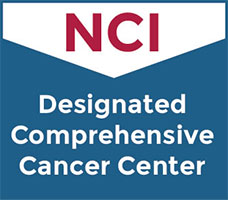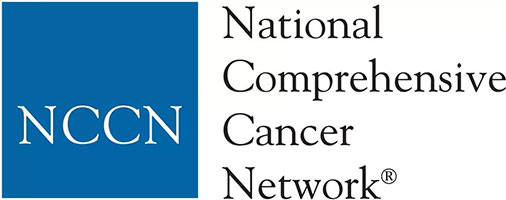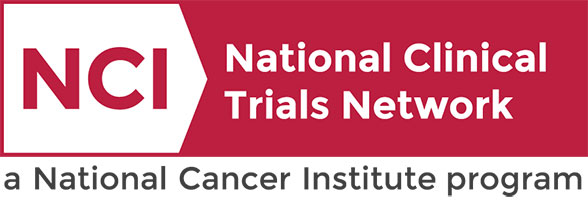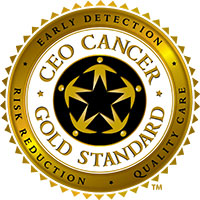Haploidentical Bone Marrow Transplantation in Sickle Cell Patients (BMTCTN1507)
Haploidentical Bone Marrow Transplantation in Sickle Cell Patients (BMTCTN1507)
This is a Phase II, single arm, multi-center trial, designed to estimate the efficacy and
toxicity of haploidentical bone marrow transplantation (BMT) in patients with sickle cell
disease (SCD). Based on their age and entry criteria patients are stratified into two groups:
(1) children with severe SCD; and (2) adults with severe SCD.
toxicity of haploidentical bone marrow transplantation (BMT) in patients with sickle cell
disease (SCD). Based on their age and entry criteria patients are stratified into two groups:
(1) children with severe SCD; and (2) adults with severe SCD.
Hematologic
Phase II
Both
Bone Marrow/Stem Cell Transplant
Not Available
Kassim, Adetola
National
Vanderbilt University
04-25-2018
Eligibility
5 Years
BOTH
NO
Inclusion Criteria:
Inclusion Criteria: Adequate physical function as measured by all of the following: 1. A Karnofsky/Lansky performance score of 60. 2. Cardiac function: Left ventricular ejection fraction (LVEF) > 40%; or LV shortening fraction > 26% by cardiac echocardiogram or by Multi Gated Acquisition Scan (MUGA) scan. 3. Pulmonary function: Pulse oximetry with a baseline O2 saturation of 85% and Diffusing capacity of the lung for carbon monoxide (DLCO) > 40% (corrected for hemoglobin). 4. Renal function: Serum creatinine 1.5 x upper limit of normal for age and estimated or measured creatinine clearance 70 mL/min/1.73 m 5. Hepatic function: 1. Serum conjugated (direct) bilirubin 2x upper limit of normal for age as per local laboratory. Participants with hyperbilirubinemia as the result of hyperhemolysis, or a severe drop in hemoglobin post blood transfusion, are not excluded. 2. Alanine aminotransferase (ALT) and aspartate aminotransferase (AST) 5x upper limit of normal as per local laboratory. 6. Liver MRI using a validated methodology per institutional preference (T2* or R2* or by ferriscan [R2 MRI]) for estimation of hepatic iron content is required for participants who are currently receiving 8 packed red blood cell transfusions per year for 1 year or have received 20 packed red blood cell transfusions (lifetime cumulative). Participants who have hepatic iron content 10 mg Fe/g liver dry weight by liver MRI must have a Gastroenterology/hepatology consultation with liver biopsy and histological examination including documentation of the absence of cirrhosis, bridging fibrosis, and active hepatitis. 7. Participants must be HLA typed at high resolution using DNA based typing at HLA-A, -B, -C, DRB1, and have available: An HLA haploidentical first degree relative donor (parents, siblings or half siblings, or children) with 2, 3, or 4 (out of 8) HLA-mismatches who is willing and able to donate bone marrow. A unidirectional mismatch in either the graft versus host or host versus graft direction is considered a mismatch. The donor and recipient must be HLA identical for at least one antigen (using high resolution DNA based typing) at the following genetic loci: HLA-A, HLA-B, HLA-C, and HLA-DRB1. Fulfillment of this criterion shall be considered sufficient evidence that the donor and recipient share one HLA haplotype, and typing of additional family members is not required. Confirmatory donor HLA typing must be completed 100 days prior to Segment A enrollment 8. Umbilical cord blood or peripheral blood stem cell donors will not be accepted. Inclusion Criteria for Stratum 1: Children Ages 5.00 - 14.99 years of age at enrollment 1. Age 5.00 - 14.99 years at Segment A enrollment 2. Participants with sickle cell anemiam disease (Hb SS or SB Thalassemia) who have one or more of the following: 1. A neurological event resulting in focal neurologic deficits that lasted 24 hours (classical clinical definition of stroke, not requiring imaging studies of the brain) OR a focal neurological event resulting in abnormalities on T2-weighted or FLAIR images using a MRI scan, indicative of an acute infarct, with no other reasonable medical explanation (definition of a stroke supported with MRI imaging scans of the brain), OR both. 2. Abnormal transcranial Doppler (TCD) measurement with a timed average maximum mean velocity of at least 200 cm/sec in the terminal portion of the internal carotid or proximal portion of middle cerebral artery or if the imaging TCD method is used > 185 cm/sec plus evidence of intracranial vasculopathy. 3. Silent Cerebral Infarct defined as an infarct-like lesion based on an MRI signal abnormality at least 3 mm in one dimension and visible in two planes on FLAIR or T2-weighted images (or similar image with 3D imaging) and documented neurological examination performed by a neurologist demonstrating the participant has a normal neurologic examination or an abnormality on examination that could not be explained by the location of the brain lesion(s). 4. Acute severe vaso-occlusive pain episodes requiring hospitalization and recalcitrant to maximum medical therapy. Episodes of pain to be adjudicated by selected committee. 5. One acute chest syndrome episode resulting in intensive care admission requiring non-mechanical ventilatory support: simple nasal cannula, face mask that requires oxygen content (venti mask, non-rebreather), simple nasal cannula, face mask O2(e.g. ventimask, rebreather), CPAP, SiPAP, BiPAP, high flow nasal cannula (HFNC) or invasive mechanical ventilatory support (delivered by ETT or trach). 6. Right heart catheterization confirmed pulmonary artery pressure >25 mmHG or mean pulmonary vascular resistance 206(57-421) dynscm-5 7. Essential hypertension on antihypertensive medications >95% upper limit of normal age (as defined according to the American Academy of Pediatrics) 8. Recurrent priapism (episodes lasting at least 4 hours at least twice in the last 12 months or 3 times in the last 24 months) recalcitrant to medical treatment or unable to use hydroxyurea due to SCD phenotype with the approval of the adjudication committee Inclusion Criteria for Stratum 2: Adults Ages 15.00 - 45.99 at enrollment Participants with sickle cell anemia (Hb SS or SB Thalassemia) who are 15.00 - 45.99 years of age at enrollment AND who have one or more of the following: 1. Age 15.00 - 45.99 years at Segment A enrollment 2. Participants with sickle cell anemia (Hb SS or SB Thalassemia) who have one or more of the following: 1. A neurological event resulting in focal neurologic deficits that lasted 24 hours (classical clinical definition of stroke, not requiring imaging studies of the brain) OR a focal neurological event resulting in abnormalities on T2-weighted or FLAIR images using a MRI scan, indicative of an acute infarct, with no other reasonable medical explanation (definition of a stroke supported with MRI imaging scans of the brain), OR both. 2. History of two or more episodes of acute chest syndrome (ACS) in the 2-year period preceding enrollment despite the institution of supportive care measures (i.e. asthma therapy and/or hydroxyurea); 3. History of three or more severe vaso-occlusive pain crises per year in the 2-year period preceding enrollment despite the institution of supportive care measures (i.e. a pain management plan and/or treatment with hydroxyurea); painful episodes related to priapism, osteonecrosis or any sickle-related complication are acceptable; 4. Administration of regular RBC transfusion therapy, defined as receiving 8 packed red blood cell transfusions per year for 1 year in the 12 months before enrollment to prevent vaso-occlusive clinical complications (i.e. pain, stroke, and acute chest syndrome); 5. An echocardiographic finding of tricuspid valve regurgitant jet velocity (TRJV) 2.7 m/sec. Exclusion Criteria: 1. Participants who have an HLA-matched sibling who is able and willing to donate bone marrow. Patients with a HLA-matched unrelated donor are not excluded. 2. Uncontrolled bacterial, viral or fungal infection in the 6 weeks before enrollment (currently taking medication with evidence of progression of clinical symptoms or radiologic findings). 3. Evidence of HIV infection or known HIV positive serology. 4. Participants who have received a previous hematopoetic cell transplant (HCT). 5. Participants who have had an Encephaloduroarteriosynangiosis (EDAS) procedure in the 6 months prior to enrollment 6. Participants who have received a prior solid organ transplant 7. Participants who have participated in another clinical trial in which the patient received an investigational or off-label use of a drug or device within 3 months of enrollment. 8. Females who are pregnant or breastfeeding. 9. Participants with clinically significant, uncontrolled autoimmune disease, requiring active medical management (immunosuppressive therapy or chemotherapy), which, in the judgment of the local Principal Investigator, indicates that the patient could not tolerate transplantation. 10. Females of child bearing potential (to include all female participants > 10 years of age, unless postmenopausal for a minimum of 1 year before the time of consent or surgically sterilized), who do not agree to practice two (2) effective methods of contraception at the same time, or do not agree to practice true abstinence when this is in line with the preferred and usual lifestyle of the subject, from the time of signing of informed consent through 12 months post-transplant. 11. Males (even if surgical sterilized) who do not agree to practice effective barrier contraception, or who do not agree to practice true abstinence from the time of signing informed consent through 12 months post-transplant. 12. Presence of anti-donor specific HLA antibodies. HLA antibody presence and specificity will be determined by solid phase immunoassays. An anti-donor specific HLA antibody will be considered positive when the mean fluorescence intensity (MFI) is higher than the cut-off defined by each institution. Recommended cut-off values are MFI >1000 for donor specific antibody to HLA-A, -B, and DRB1 and MFI >2000 for HLA-C, DQB1 and DPB1. This must be measured before the final donor selection, and 100 days before enrollment in Segment A (preferably 30 days before Segment A enrollment). If MFI >1000 for donor specific antibody to HLA-A, -B, DRB1 and/or MFI >2000 for HLA-C, DQB1 and DPB1, documentation must be submitted to the DCC coordinator for review and approval by a Protocol Chair and/or Protocol Officer prior to enrollment
Inclusion Criteria: Adequate physical function as measured by all of the following: 1. A Karnofsky/Lansky performance score of 60. 2. Cardiac function: Left ventricular ejection fraction (LVEF) > 40%; or LV shortening fraction > 26% by cardiac echocardiogram or by Multi Gated Acquisition Scan (MUGA) scan. 3. Pulmonary function: Pulse oximetry with a baseline O2 saturation of 85% and Diffusing capacity of the lung for carbon monoxide (DLCO) > 40% (corrected for hemoglobin). 4. Renal function: Serum creatinine 1.5 x upper limit of normal for age and estimated or measured creatinine clearance 70 mL/min/1.73 m 5. Hepatic function: 1. Serum conjugated (direct) bilirubin 2x upper limit of normal for age as per local laboratory. Participants with hyperbilirubinemia as the result of hyperhemolysis, or a severe drop in hemoglobin post blood transfusion, are not excluded. 2. Alanine aminotransferase (ALT) and aspartate aminotransferase (AST) 5x upper limit of normal as per local laboratory. 6. Liver MRI using a validated methodology per institutional preference (T2* or R2* or by ferriscan [R2 MRI]) for estimation of hepatic iron content is required for participants who are currently receiving 8 packed red blood cell transfusions per year for 1 year or have received 20 packed red blood cell transfusions (lifetime cumulative). Participants who have hepatic iron content 10 mg Fe/g liver dry weight by liver MRI must have a Gastroenterology/hepatology consultation with liver biopsy and histological examination including documentation of the absence of cirrhosis, bridging fibrosis, and active hepatitis. 7. Participants must be HLA typed at high resolution using DNA based typing at HLA-A, -B, -C, DRB1, and have available: An HLA haploidentical first degree relative donor (parents, siblings or half siblings, or children) with 2, 3, or 4 (out of 8) HLA-mismatches who is willing and able to donate bone marrow. A unidirectional mismatch in either the graft versus host or host versus graft direction is considered a mismatch. The donor and recipient must be HLA identical for at least one antigen (using high resolution DNA based typing) at the following genetic loci: HLA-A, HLA-B, HLA-C, and HLA-DRB1. Fulfillment of this criterion shall be considered sufficient evidence that the donor and recipient share one HLA haplotype, and typing of additional family members is not required. Confirmatory donor HLA typing must be completed 100 days prior to Segment A enrollment 8. Umbilical cord blood or peripheral blood stem cell donors will not be accepted. Inclusion Criteria for Stratum 1: Children Ages 5.00 - 14.99 years of age at enrollment 1. Age 5.00 - 14.99 years at Segment A enrollment 2. Participants with sickle cell anemiam disease (Hb SS or SB Thalassemia) who have one or more of the following: 1. A neurological event resulting in focal neurologic deficits that lasted 24 hours (classical clinical definition of stroke, not requiring imaging studies of the brain) OR a focal neurological event resulting in abnormalities on T2-weighted or FLAIR images using a MRI scan, indicative of an acute infarct, with no other reasonable medical explanation (definition of a stroke supported with MRI imaging scans of the brain), OR both. 2. Abnormal transcranial Doppler (TCD) measurement with a timed average maximum mean velocity of at least 200 cm/sec in the terminal portion of the internal carotid or proximal portion of middle cerebral artery or if the imaging TCD method is used > 185 cm/sec plus evidence of intracranial vasculopathy. 3. Silent Cerebral Infarct defined as an infarct-like lesion based on an MRI signal abnormality at least 3 mm in one dimension and visible in two planes on FLAIR or T2-weighted images (or similar image with 3D imaging) and documented neurological examination performed by a neurologist demonstrating the participant has a normal neurologic examination or an abnormality on examination that could not be explained by the location of the brain lesion(s). 4. Acute severe vaso-occlusive pain episodes requiring hospitalization and recalcitrant to maximum medical therapy. Episodes of pain to be adjudicated by selected committee. 5. One acute chest syndrome episode resulting in intensive care admission requiring non-mechanical ventilatory support: simple nasal cannula, face mask that requires oxygen content (venti mask, non-rebreather), simple nasal cannula, face mask O2(e.g. ventimask, rebreather), CPAP, SiPAP, BiPAP, high flow nasal cannula (HFNC) or invasive mechanical ventilatory support (delivered by ETT or trach). 6. Right heart catheterization confirmed pulmonary artery pressure >25 mmHG or mean pulmonary vascular resistance 206(57-421) dynscm-5 7. Essential hypertension on antihypertensive medications >95% upper limit of normal age (as defined according to the American Academy of Pediatrics) 8. Recurrent priapism (episodes lasting at least 4 hours at least twice in the last 12 months or 3 times in the last 24 months) recalcitrant to medical treatment or unable to use hydroxyurea due to SCD phenotype with the approval of the adjudication committee Inclusion Criteria for Stratum 2: Adults Ages 15.00 - 45.99 at enrollment Participants with sickle cell anemia (Hb SS or SB Thalassemia) who are 15.00 - 45.99 years of age at enrollment AND who have one or more of the following: 1. Age 15.00 - 45.99 years at Segment A enrollment 2. Participants with sickle cell anemia (Hb SS or SB Thalassemia) who have one or more of the following: 1. A neurological event resulting in focal neurologic deficits that lasted 24 hours (classical clinical definition of stroke, not requiring imaging studies of the brain) OR a focal neurological event resulting in abnormalities on T2-weighted or FLAIR images using a MRI scan, indicative of an acute infarct, with no other reasonable medical explanation (definition of a stroke supported with MRI imaging scans of the brain), OR both. 2. History of two or more episodes of acute chest syndrome (ACS) in the 2-year period preceding enrollment despite the institution of supportive care measures (i.e. asthma therapy and/or hydroxyurea); 3. History of three or more severe vaso-occlusive pain crises per year in the 2-year period preceding enrollment despite the institution of supportive care measures (i.e. a pain management plan and/or treatment with hydroxyurea); painful episodes related to priapism, osteonecrosis or any sickle-related complication are acceptable; 4. Administration of regular RBC transfusion therapy, defined as receiving 8 packed red blood cell transfusions per year for 1 year in the 12 months before enrollment to prevent vaso-occlusive clinical complications (i.e. pain, stroke, and acute chest syndrome); 5. An echocardiographic finding of tricuspid valve regurgitant jet velocity (TRJV) 2.7 m/sec. Exclusion Criteria: 1. Participants who have an HLA-matched sibling who is able and willing to donate bone marrow. Patients with a HLA-matched unrelated donor are not excluded. 2. Uncontrolled bacterial, viral or fungal infection in the 6 weeks before enrollment (currently taking medication with evidence of progression of clinical symptoms or radiologic findings). 3. Evidence of HIV infection or known HIV positive serology. 4. Participants who have received a previous hematopoetic cell transplant (HCT). 5. Participants who have had an Encephaloduroarteriosynangiosis (EDAS) procedure in the 6 months prior to enrollment 6. Participants who have received a prior solid organ transplant 7. Participants who have participated in another clinical trial in which the patient received an investigational or off-label use of a drug or device within 3 months of enrollment. 8. Females who are pregnant or breastfeeding. 9. Participants with clinically significant, uncontrolled autoimmune disease, requiring active medical management (immunosuppressive therapy or chemotherapy), which, in the judgment of the local Principal Investigator, indicates that the patient could not tolerate transplantation. 10. Females of child bearing potential (to include all female participants > 10 years of age, unless postmenopausal for a minimum of 1 year before the time of consent or surgically sterilized), who do not agree to practice two (2) effective methods of contraception at the same time, or do not agree to practice true abstinence when this is in line with the preferred and usual lifestyle of the subject, from the time of signing of informed consent through 12 months post-transplant. 11. Males (even if surgical sterilized) who do not agree to practice effective barrier contraception, or who do not agree to practice true abstinence from the time of signing informed consent through 12 months post-transplant. 12. Presence of anti-donor specific HLA antibodies. HLA antibody presence and specificity will be determined by solid phase immunoassays. An anti-donor specific HLA antibody will be considered positive when the mean fluorescence intensity (MFI) is higher than the cut-off defined by each institution. Recommended cut-off values are MFI >1000 for donor specific antibody to HLA-A, -B, and DRB1 and MFI >2000 for HLA-C, DQB1 and DPB1. This must be measured before the final donor selection, and 100 days before enrollment in Segment A (preferably 30 days before Segment A enrollment). If MFI >1000 for donor specific antibody to HLA-A, -B, DRB1 and/or MFI >2000 for HLA-C, DQB1 and DPB1, documentation must be submitted to the DCC coordinator for review and approval by a Protocol Chair and/or Protocol Officer prior to enrollment



